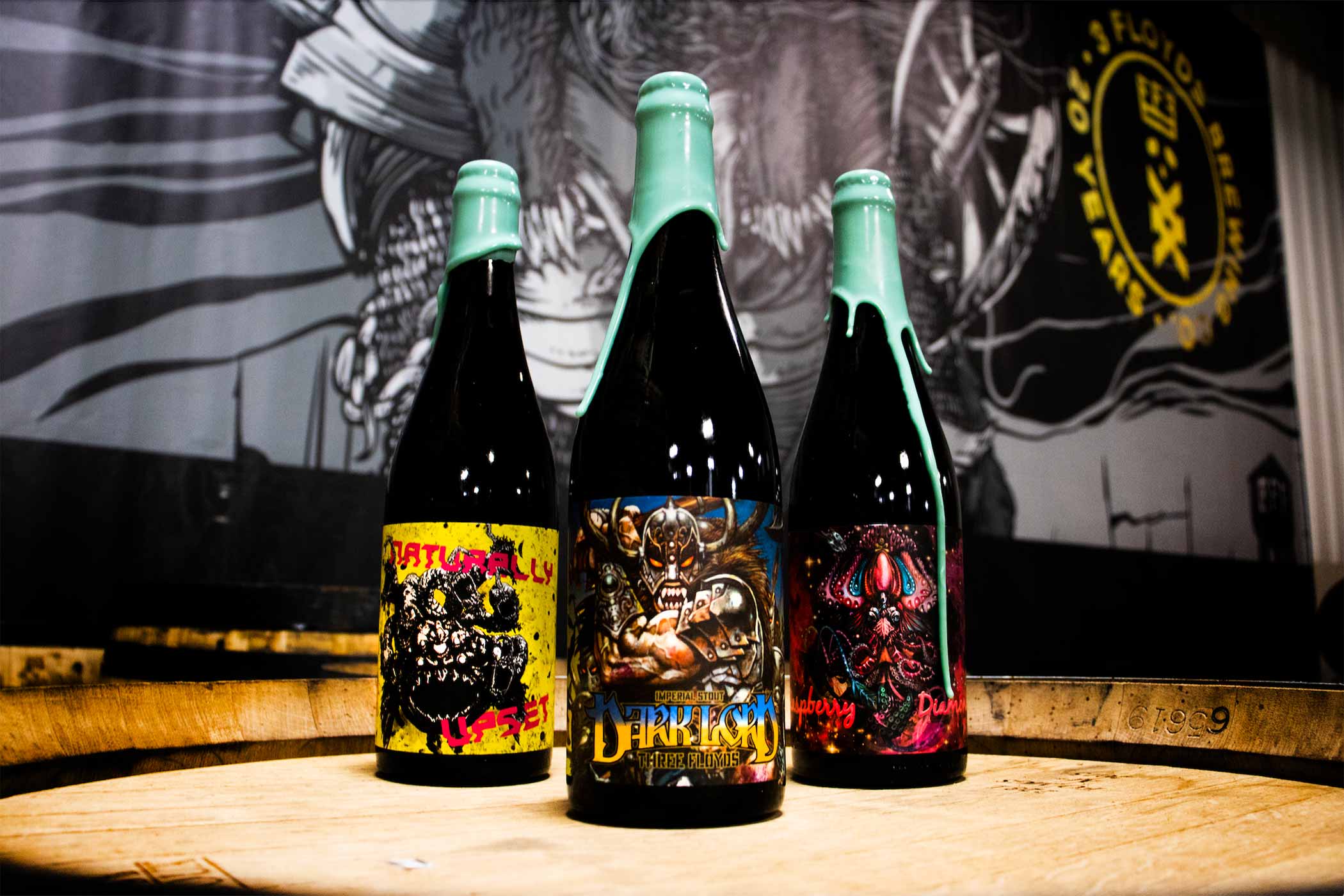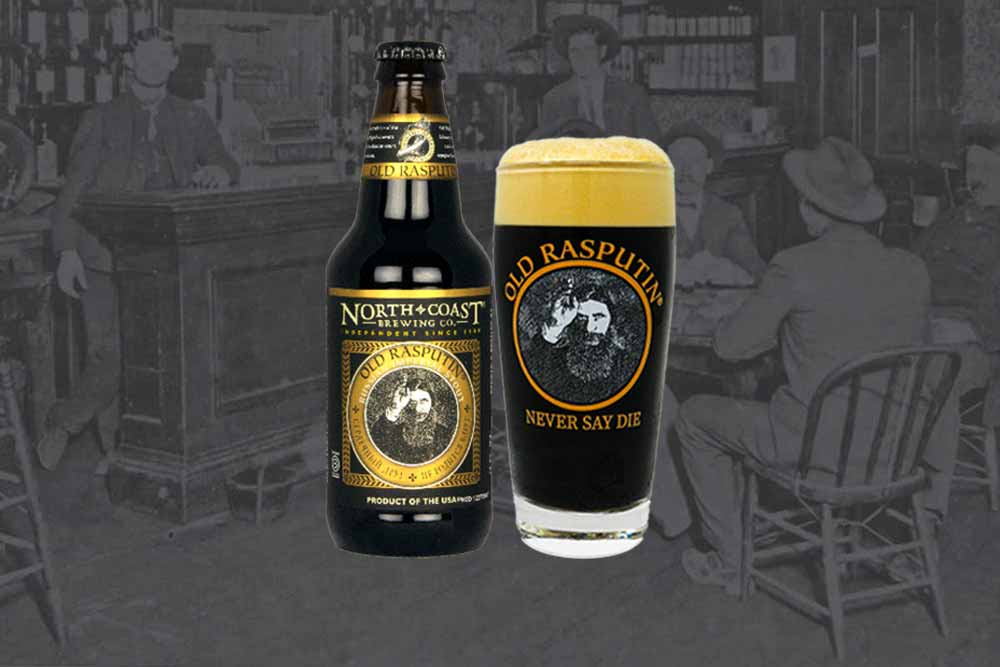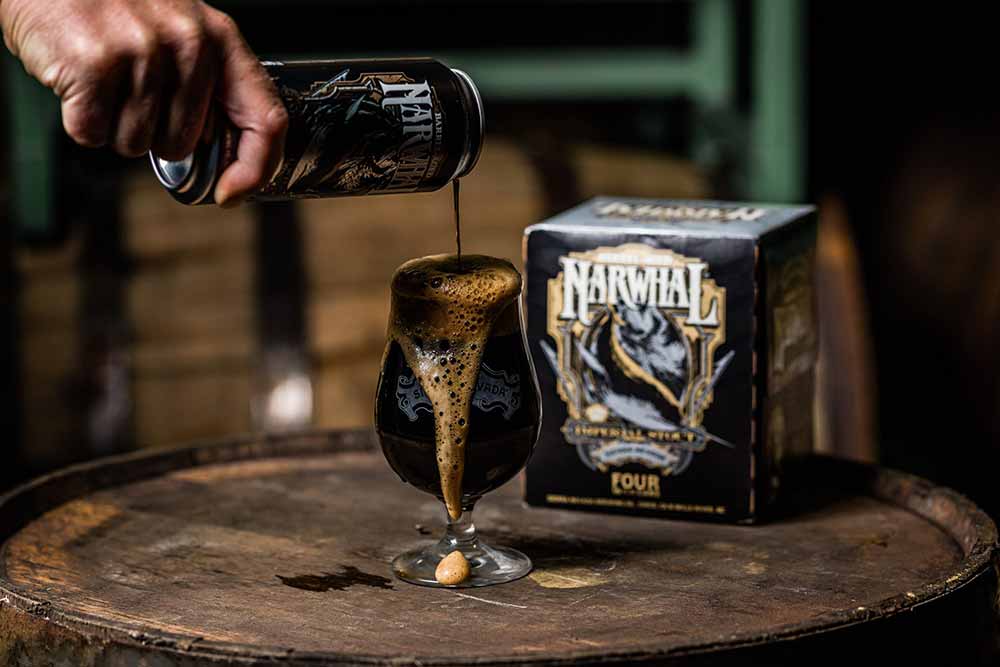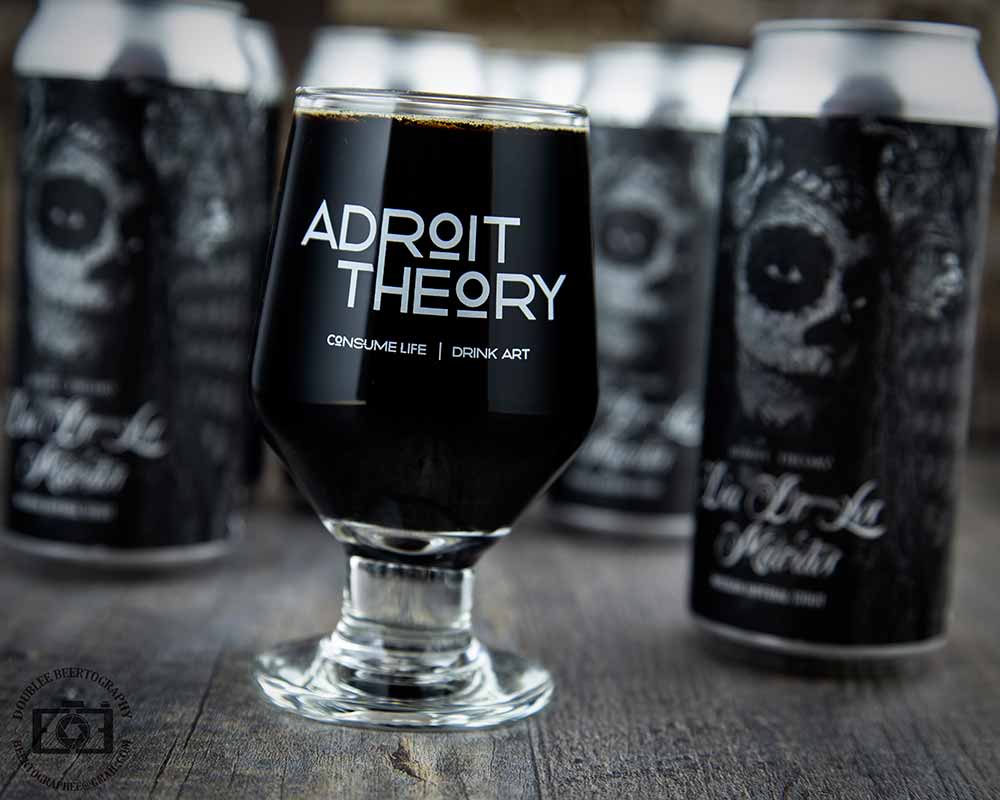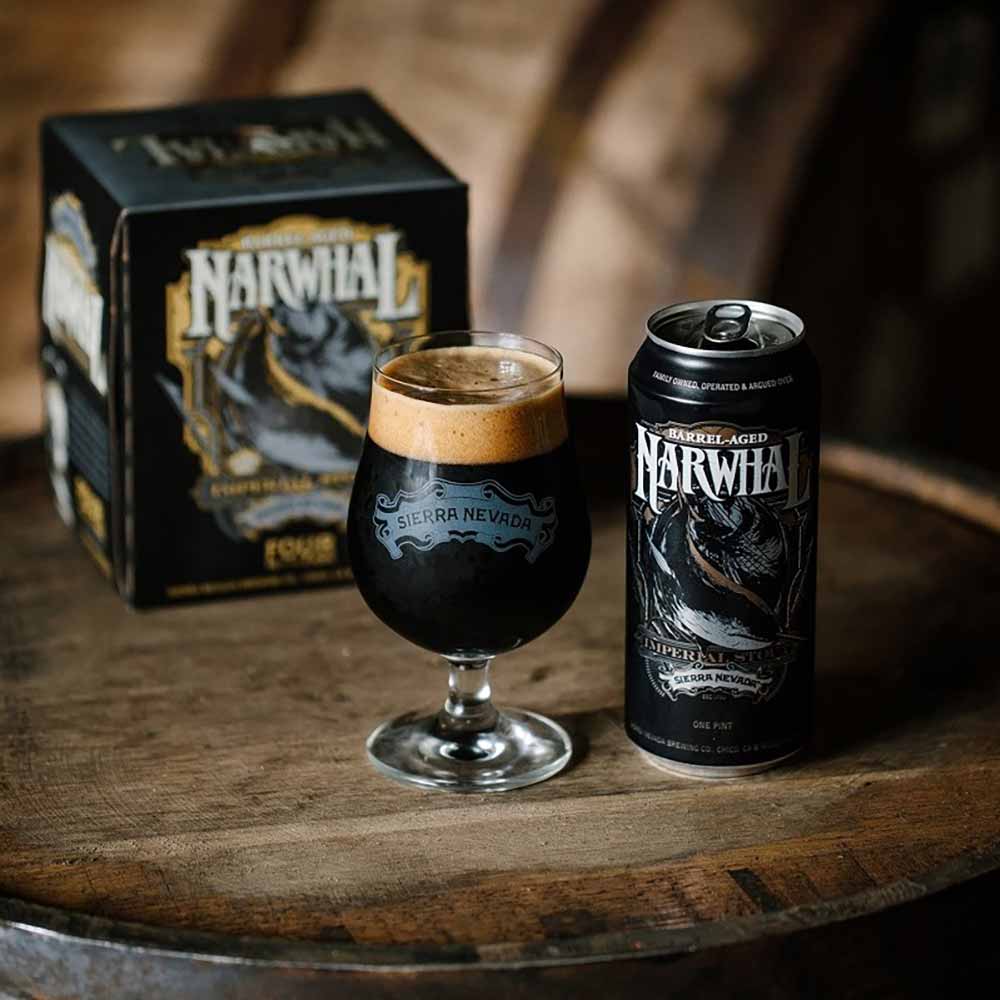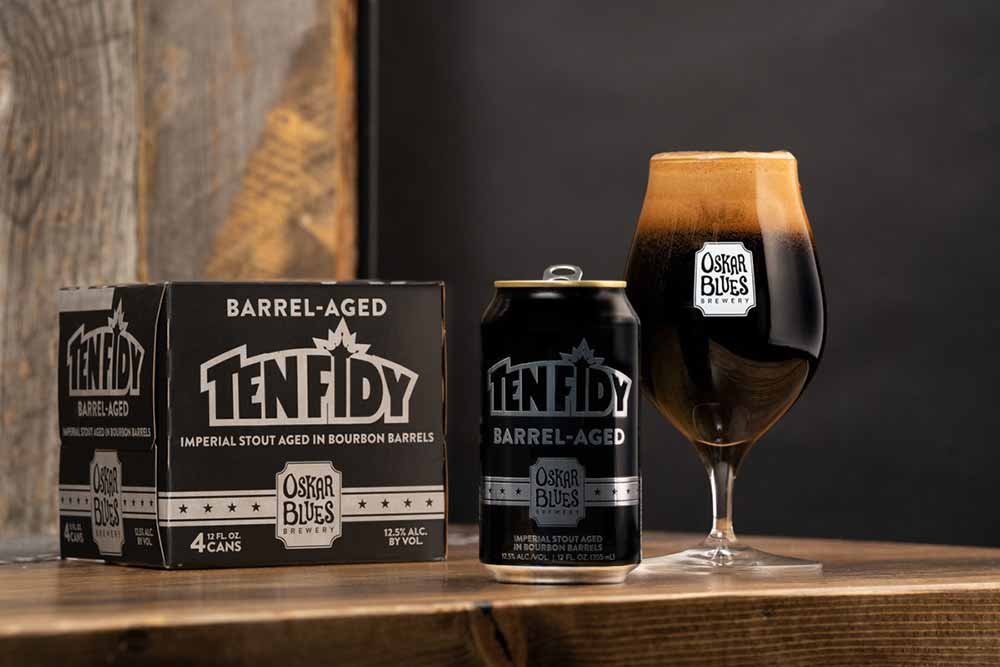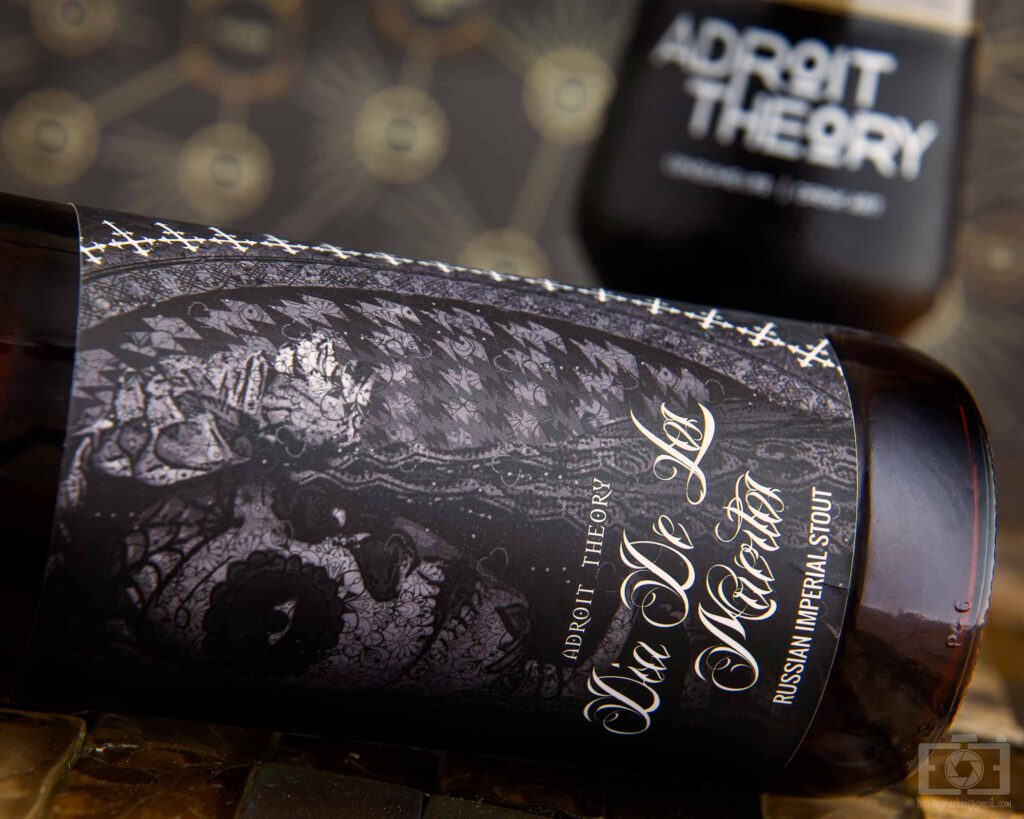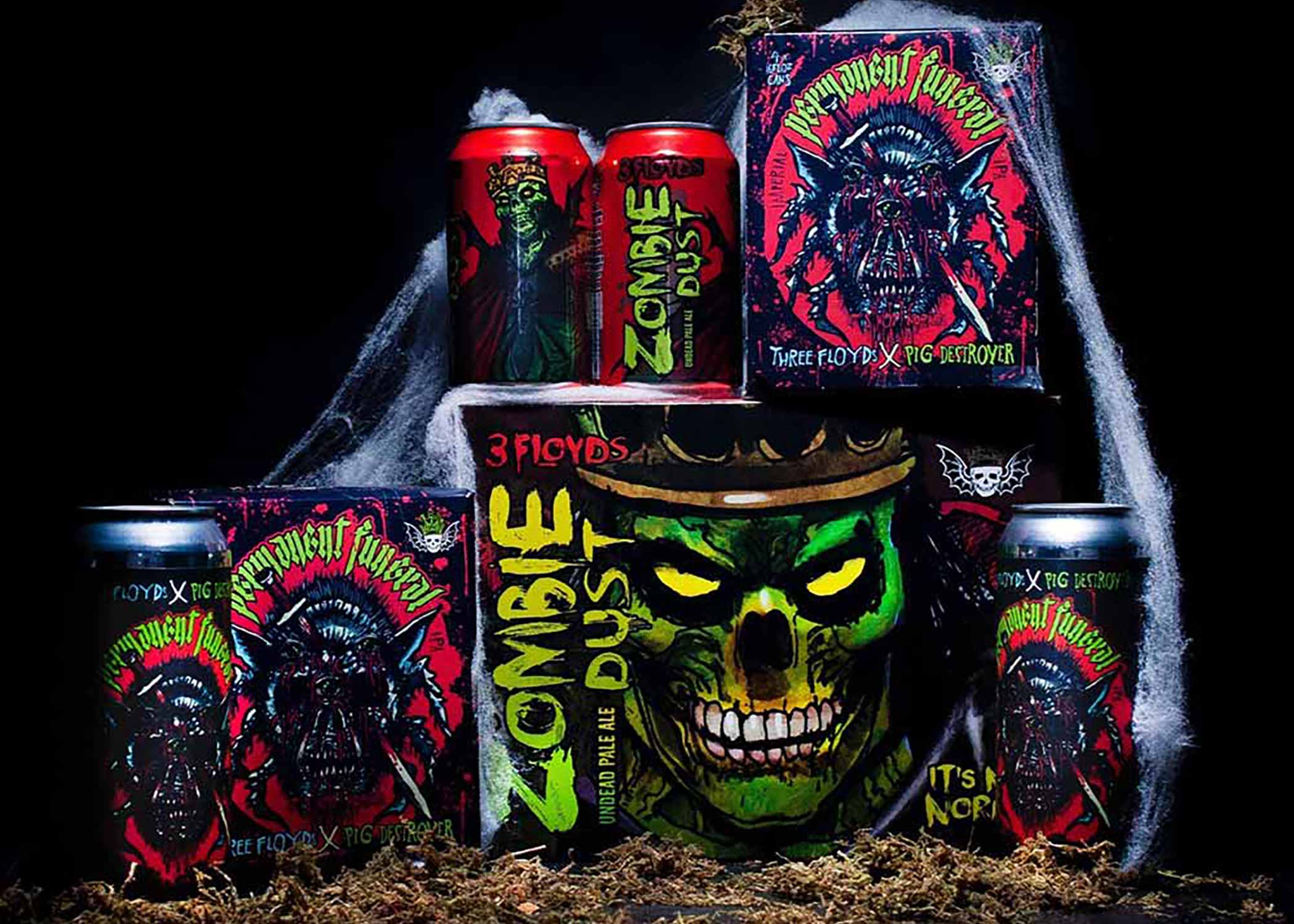Shop
What Is a Russian Imperial Stout?
Dark and mysterious.
Looking for More?
Stout. Just saying that word out loud gives us goosebumps. Not because they’re scary. But because when we think of some of the beers that changed our lives, they’re often stouts. Like the first time we had Hunahpu, Kentucky Brunch Brand Stout, or Parabola. Yes, we stood in line for a Goose Island BCBS release in the late aughts before its acquisition and almost blew our head off at FoBAB (Festival of Wood and Barrel-Aged Beer).
Over the last eight years, we’ve made friends with countless breweries crushing the stout game—Horus, North Park, The Bruery, WeldWerks, Westbound & Down, Side Project, Cycle, Fremont, Cerebral, Holy Mountain, Mikerphone, Angry Chair, Phase Three, 3 Sons, Corporate Ladder, Weathered Souls, Moksa, Amalgam, Barreled Souls—to name just a fraction.
Even breweries we came accustomed to for their hoppier or sour beers branched off into stouts—Humble Sea and Southern Grist come to mind.
Stout’s dark depths just plumb into our souls in a way almost no other style can.
And it’s not just imperial, barrel-aged versions that rock us. Stouts include a catalog of substyles as long as the list of ingredients that go into some of those newer pastry stouts.
For instance, oatmeal stouts, whose addition of oats adds a velvety texture.
Coffee stouts that combine our AM fix with our PM one.
Or even dry Irish stouts, popularized by Guinness, or oyster stouts, which sound weird on paper but surprise and delight the palate.
We’ve covered so many of these variations, but perhaps we’ve skipped over one of the most classic—the Russian imperial stout.
These big, boozy, badass stouts will knock you back a keg (we mean peg).
Almost an old-school style at this point, Russian imperial stouts haven’t gone away. But they are raising some new questions.
Like what are Russian imperial stouts exactly? What makes them different from just an imperial stout? And considering what’s happening in the world, are some breweries considering dropping that moniker entirely?
Let’s find out.
Murky and Perhaps Mistaken History
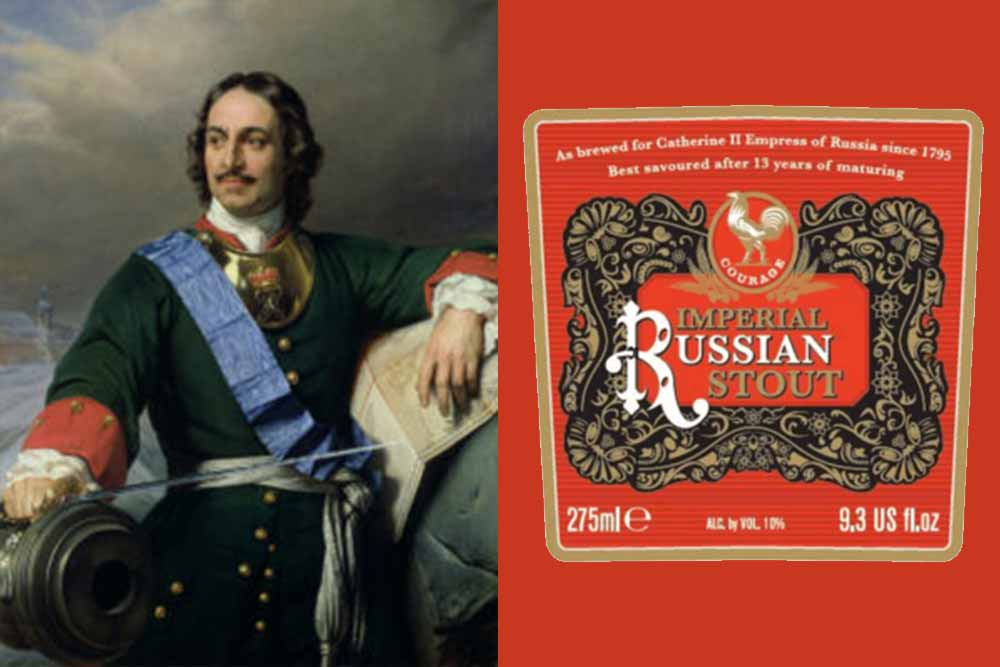
Graphics courtesy of American Craft Beer
Like with many styles out there, the exact history of Russian imperial stouts is a little murky. Common lore tells the story of former Russian emperor Peter the Great visiting England in 1698. Apparently, during that visit, he fell in love with a type of darker beer gaining strength during the early eighteenth century—stout.
But this folklore doesn’t quite track.
Porters first appeared in England around 1721 as a darker, richer version of an English mild brown ale. At the time, brewers made two versions of their beer styles—a lower ABV and a higher ABV, considered a more premium product. Lighter versions were known as brown porters, more robust ones as, well, robust porters, and eventually, the most premium of these beers became “stout porter.”
So, suppose we’re following the timelines above. In that case, we can see how things start to get murky with this origin story: If Peter the Great documented his visit in 1698…technically, stouts (and even porters) didn’t really exist yet!
But to at least paint the picture of this somewhat dubious story, history does show that the Anchor Brewery of London shipped strong ales to the Balkan states and Russia. Supposedly, the beer didn’t survive the journey, so a second stronger, higher-alcohol version went out next, making it to the Imperial Court of Russia. (American Craft Beer) Although this myth has been slightly debunked in favor of the theory that people in this market simply wanted a stronger beer.
Here, it is said, the stronger “stout” caught the eye (and tongue) of Empress Catherine the Great (1729-1796), who became a fan of the beer (called Entire), getting shipments from Barclay Perkins Anchor Brewery starting in 1781.
Now, the recorded term “Russian Stout” didn’t appear until 1889, with the entire “Russian Imperial Stout” first popping up when Barclays Perkins Co. debuted its Courage Russian Imperial Stout in 1970. (Funky Picnic Brewery & Cafe) Named after Barclays brewer John Courage, the beer supposedly mimicked the original recipe Catherine the Great fell in love with and had shipped to Russia.
You can see how we have to take the origin of the Russian imperial stout with a grain of salt.
Russian Imperial Stouts Find Their Way to America
In America, one of the earliest examples of the Russian imperial stouts was Bell’s Expedition Stout. But many consider North Coast’s Old Rasputin as one of the style-defining beers. First produced in 1996, Old Rasputin leans heavily into the Russian part of Russian imperial stout, featuring the late-nineteenth-century Russian mystic known as Grigori Rasputin, aka the “Mad Monk,” on the label, along with Russian words that translate to “a sincere friend is not born instantly.”
“Back in the ‘90s, Old Rasputin was the first [Russian imperial stout] I had,” says 3 Floyds Brewmaster Chris Boggess, who is now in charge of making one of the most infamous Russian imperial stouts on the market—Dark Lord. “When I first started brewing, it was pretty extreme; it has that murky, mysterious style to it.”
And into the start of the twenty-first century, other big breweries made their own—3 Floyds Dark Lord (2002), Firestone Walker Parabola (2005), Oskar Blues Ten FIDY® (2007), Surly Darkness (2006), Sierra Nevada Narwhal (2013), Avery The Czar (2014), Cigar City Marshal Zhukov’s.
Most recently, the style has come into the spotlight for an entirely different reason.
Will We Still Call These ‘Russian’ Imperial Stouts?
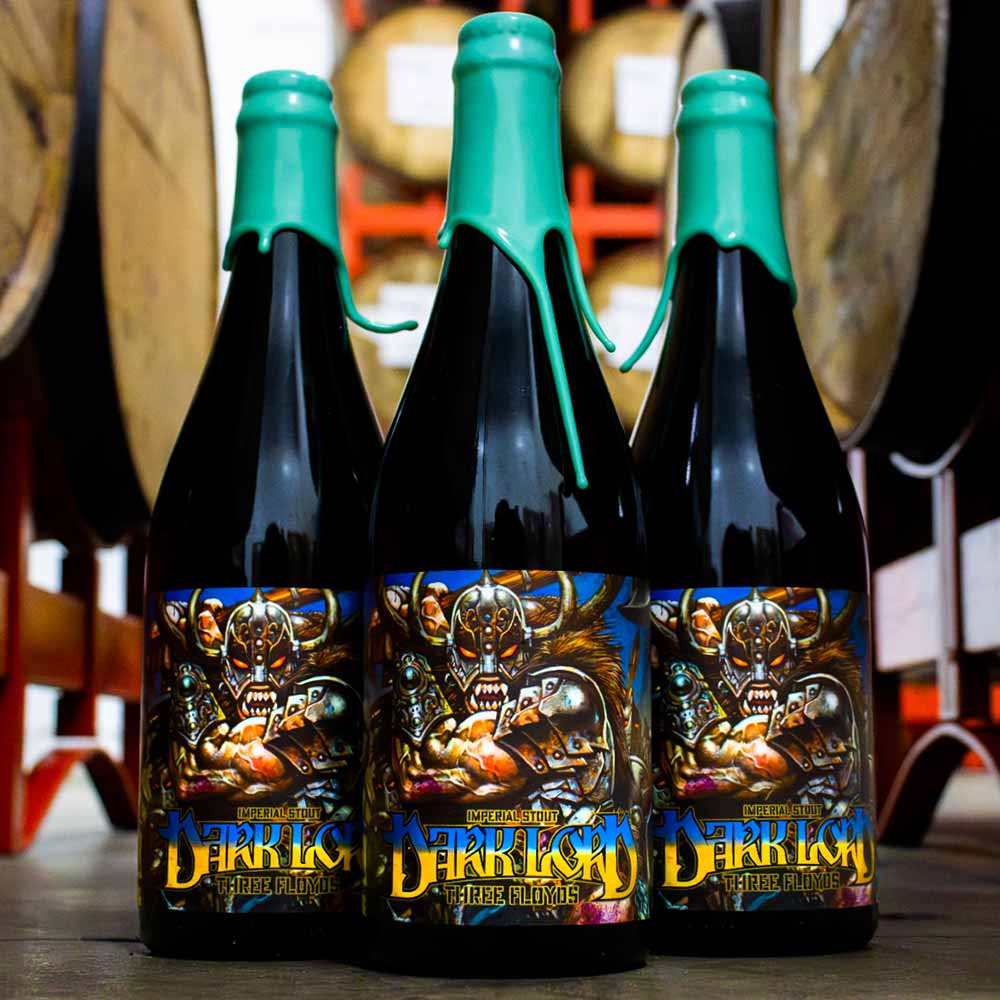
Photography courtesy of 3 Floyds Brewing
When the ongoing conflict in the Russo-Ukraine war started in February last year, some breweries changed their approach to the style.
In March 2022, Black Sheep Brewery in Masham, North Yorkshire, England, released news that they completely removed their Russian imperial stout from their portfolio. “Though the products are not made in Russia or with Russian ingredients, the designs and brand identity are clearly influenced by Russia, so we do not feel selling these products is appropriate at this moment in time,” the brewery wrote on its website.
Similarly, Boggess shares that 3 Floyds removed the word “Russian” from the label. “We rebranded ours as imperial stout due to the conflict,” he says. “There is a pretty large Ukrainian population in Chicago, and we have Ukranian friends, so we felt it was appropriate to drop Russian off our labels.”
But that hasn’t been everyone’s experience. Adroit Theory, recognized for its highly prized stouts, has made some fantastic versions of this style and will continue to do so. “I haven’t received any pushback from wholesalers, retailers, or customers,” says owner Mark Osbourne. “I think our customers recognize that the word ’Russian’ in ’Russian imperial stout’ is a geographic reference based on a historical beer that was brewed to be a higher ABV to withstand the long trip from England to Russia,” he says.
While the history of this beer style continues to evolve, what is clear is that some behemoth industry-defining versions exist.
That is if we can settle on how to precisely define this style.
The Dark and Mysterious Definition of Russian Imperial Stout
“It’s an old-school classic big stout,” explains Osbourne, noting out of the 1,500 beers he’s made in Adroit Theory’s ten-year history, about twenty-five percent have been stouts, and specifically, fifty have been Russian imperial stouts. “I would say big, robust, full-bodied, and black as night.”
Boggess agrees, explaining, “It’s a very old-school style, especially for American craft, but it’s very fun to make and drink.”
But if you look up some early-day Russian imperial stouts like Ten FIDY®, Narwhal, or Firestone Walker’s Parabola on Untappd, they’re listed simply as imperial stouts.
Where is the line in the sand between Russian imperial stouts and just good ol’ imperial stouts?
If you’re confused, that’s okay. Others are, too.
Osbourne explains that we haven’t quite clearly separated stout substyles as with IPAs. “If you think about an IPA at 5% [ABV] and try to compare it to an IPA that was 15% [ABV], like holy smokes, those are two different things for sure,” he says. A lack of precise segmentation with stouts can make it hard to pinpoint a definition here.
“I love stouts, I drink stouts, I shop for stouts, and obviously, we brew a crap ton of stouts, but even with that, it’s like, what are we talking about?” says Osbourne when asked how to define the style. “Are we talking about Dogfish Head World Wide Stout, which is 20% [ABV] just out of control, The Bruery’s Black Tuesday, or Oskar Blues Ten FIDY®? … [Which is] 10.5 percent.”
He adds, “How are those stouts all considered Russian imperial stouts in the same category but not even related to each other?”
It’s a great question.
Osbourne attempted to find the answer when he opened Adroit Theory. While he released an imperial stout first, Osbourne soon made a Russian imperial stout, specifically juxtaposing it with that first imperial one.
“I think about the ABV as the big delineator,” says Osbourne. “We’re talking about serious double digits on the Russian side. I mean, anything below twelve, I probably wouldn’t categorize in the Russian family. … To me, Russian imperial stout is that sweet spot o, maybe eleven, but really like twelve to fourteen percent.”
For Boggess, he says the style has to be a minimum of 8% ABV and up to 12% ABV. Which does account for those like the aforementioned Old Rasputin (9% ABV). Or Oskar Blues Ten FIDY®, which hits 10.5% ABV.
With a higher ABV in mind, balance becomes critical with Russian imperial stouts.
Harmony in Chaos: Challenges With Russian Imperial Stouts
With Dark Lord, Boggess says, “We wanted it to be significantly higher in alcohol (in this case, 13.7% ABV), but we also wanted it to be more balanced.”
Similarly, Osbourne says one of his biggest challenges with Russian imperial stouts is “balancing the bitterness that’s required versus the sweetness you inherently create,” he says. “[You’re] trying to find that balance point where it’s bitter enough yet sweet enough, but not too bitter and not too sweet so that you can actually drink it and enjoy it.”
So, how do you achieve that perfect harmony between booziness, sweetness, and drinkability?
Everything Starts With the Malt
At Adroit Theory, Osbourne uses a very specific grain bill with specialty malts to tease out those sweeter qualities—Maris Otter (which has pumpernickel rye qualities, according to Osbroune), Simpson’s Golden Promise (“which we love because you get that sweet flavor, but also those bready [notes],” he says), and debittered darker grains like Midnight Wheat or Carafa III. “You’re getting all that inky black quality but none of the inherent astringent bitterness,” says Osbourne.
For Boggess, he uses roasted malt, chocolate malt, and crystal malts for sweetness. “It’s going to be sweet no matter what, but you need the full gamut of sweetness and roastiness to balance it out,” he says.
And Ends With the Yeast
To handle the amount of fermentable sugar in a Russian imperial stout, Boggess says 3 Floyds uses “an irresponsible amount of yeast just to get [fermentation] going because it tears through that sugar and dies off so quickly that you need to really overpitch to eat up what it can,” he says.
Boggess mentions at 3 Floyds they also use some enzymes to “make the beer more fermentable, [although] it still finishes pretty high.”
Osbourne’s approach includes step feeding during fermentation with sugars like candi syrup or Belgian candi syrup “so that as the yeast starts to slow down, we can insert additional high-fermentable sugars that give it the fuel it needs but also interjects additional flavors we didn’t get from the grain bill.”
Osbourne acknowledges the yeast has posed the biggest challenge for him. Although they’ve experimented with blending yeast and using specialty yeast, at the end of the day, “We found that just good old classic 05 American Ale does that best trick,” he says.
While these beers may be demanding to brew, their impressive outcomes are worth the work.
When Was the Last Time You Had a Russian Imperial Stout?
Have you asked yourself that question as you’re reading this piece? We did, too.
Yes, Russian imperial stouts are old-school in many ways, but they also carry an air of reverence. One that has permeated craft beer culture and doesn’t show signs of dissipating soon.
“I think they had their heyday before the haze craze. … But if you look on Untappd, I don’t know the exact numbers, but my guess is ninety or the top one hundred beers are still classic big Russian imperial stouts,” says Osbourne. “People still enjoy these types of beers.”
Boggess agrees, although, in all fairness, Dark Lord has taken on an entirely different life that will probably last for decades. “Still, it seems that a good portion of beer drinkers really gravitate to that beer [style] because it’s so extreme and tastes great,” he says.
Osbourne hopes that if you don’t already enjoy Russian imperial stouts, you will consider trying one. “You should love Russian imperial stouts, you should buy Russian imperial stouts, and you should get your local brewery that you love to brew Russian imperial stouts because it’s the best,” he exclaims. “They’re the best style!”
A Few Top Russian Imperial Stouts to Try
Dia De Los Muertos – Adroit Theory
Purcellville, VA
The first Russian imperial stout Osbourne brewed became the prototype for Dia De Los Muertos. And even though Osbourne says they’re now making a Russian imperial stout pretty much every other month, Dia De Los Muertos remains the archetype.
Osbourne considers this beer a flagship.
Jet black in color with a full body and pervasive notes of dark chocolate and coffee, Dia De Los Muertos has just enough sweetness to balance that booziness—all 13.7% ABV of it!
Dark Lord – 3 Floyds Brewing
Munster, IN
A beer that spawned a sect of fanatical followers, Dark Lord debuted in 2006 when founder Nick Floyd found a strong stout at a local brewpub and said, “We can make one bigger than that,” says Boggess. “He took it to the extreme and came up with Dark Lord, and it just took off.”
“Took off” is definitely an understatement. Only available one day a year at the Indiana-based brewery, Dark Lord captured cultural lore at a time when people started standing in line for hours to nab beers.
The release turned into Dark Lord Day, and the rest is history.
This demonic Russian imperial stout includes coffee, Mexican vanilla, and Indian sugar, hitting 15% ABV.
A Russian imperial stout that will forever stand the test of time, Dark Lord simply can’t be beaten.
Ten FIDY® – Oskar Blues Brewery®
Longmont, CO
A Russian imperial stout that Osbourne is “personally fond of,” Ten FIDY® from Oskar Blues stands out for “that nice balance between drinkability and big booziness,” says Osbourne, admitting he thinks this is the best beer Oskar Blues makes.
He wouldn’t be alone. Many consider this beer an iconic version of a Russian imperial stout, even though it only hits 10.5% ABV.
The enormous amount of two-row and chocolate malt, roasted barley, and flaked oats contribute to Ten FIDY®’s intense chocolate, caramel, and toffee notes. But that harmony shines through when considering the high bitterness at sixty-five IBUs.
Old Rasputin – North Coast Brewing Company
Fort Bragg, CA
For many, like Boggess, Old Rasputin was one of the first Russian imperial stouts they tried. Developing a cult-like following, this beer is constantly in the conversation regarding the epitome of the style.
“Old Rasputin is, for sure, a starting point, and then you can go from there,” says Boggess.
And while the beer doesn’t hit that higher ABV that Osbourne considers optimal for a Russian imperial stout, it still leaves a big impression on him.
“Rasputin is funny,” says Osbourne. “It’s a very nice beer. The last time I had it … I just remember thinking how, like, wow, it was just like just down the hatch, basically. This beer used to be [considered] such a huge beer, but it’s [just] 9% now!”
Narwhal – Sierra Nevada Brewing Co.
Chico, CA
Many may not know this, but Sierra Nevada Founder Ken Grossman first brewed a stout when he started the brewery. Although the now-iconic Pale Ale came next, stouts eventually found a sticking point at the Chico-based brewery.
In 2013, Sierra Nevada released Narwhal, a Russian imperial stout with ten different grains hitting sixty IBUs for a beautifully balanced chocolatey yet hoppy beer.
World Wide Stout – Dogfish Head Craft Brewery
Milton, DE
Hitting 18% ABV, World Wide Stout includes a crazy amount of barley to drive up that alcohol complexity. Osbourne cites this one as one of his favorite classic examples of a Russian imperial stout but admits, “I love all beers from Dogfish head, so I’m a little biased in that regard,” he says.
Debuting in the winter of 1999, World Wide Stout continues to be a worldwide phenomenon, proving that Russian imperial stouts have significantly impacted the industry (and our brains!).
Parabola – Firestone Walker Brewing Company
Paso Robles, CA
One of Firestone Walker’s most legendary beers, Parabola ages twelve months in bourbon barrels for an extra layer of complexity. Firestone mentions notes of black cherry, dark chocolate, vanilla, and roast coffee.
Released annually, Parabola ends up differently each year.
Darkness – Surly Brewing Company
Minneapolis, MN
Another beer with a devoted following, Darkness first saw the light in 2006. Over the next seventeen years, this Russian imperial stout has spawned tons of variations at Surly.
But the original, brewed for Surly’s favorite day of the year, remains one of the best. “Darkness is great,” shares Boggess.
Fun fact: When Surly first released this beer, they only sold it in growlers.
Expect huge notes of dark cherry, plump raisin, sticky toffee pudding, and chocolate cookies.
Expedition Stout – Bell’s Brewery
Kalamazoo, MI
Technically one of the earliest American releases of a Russian imperial stout, Expedition Stout has a huge malt body, giving this beer plenty of chocolate, caramel, and raisin notes.
Brewed with the idea of cellaring, Expedition Stout may drink pretty bitter at first, but let this beer rest for a while, and you’ll notice it starts to mellow out and grow in complexity.

